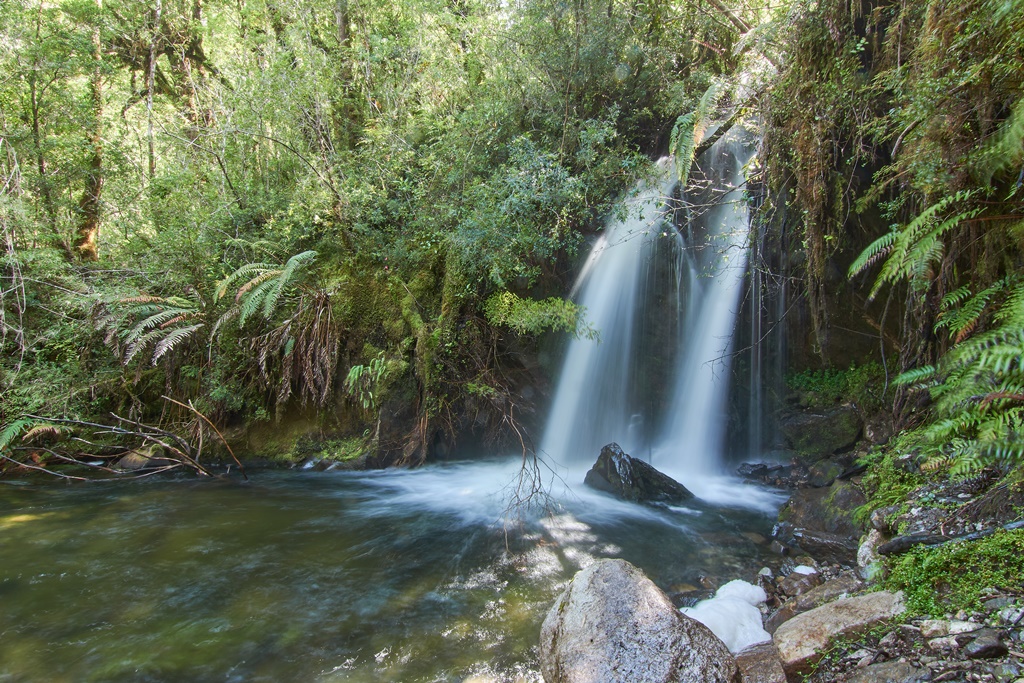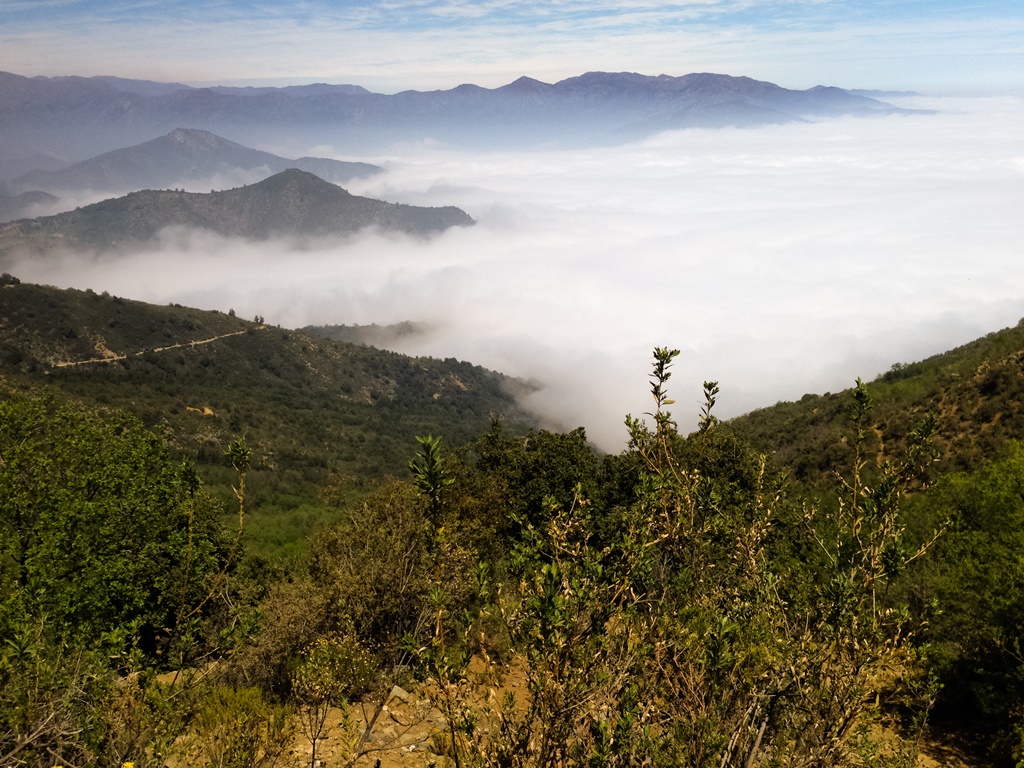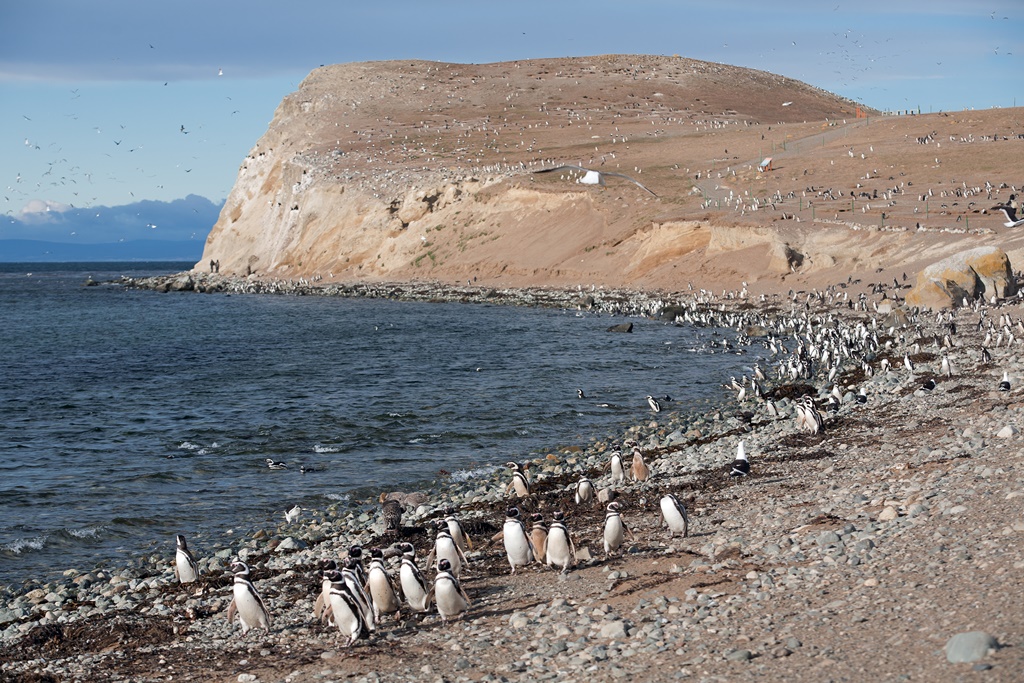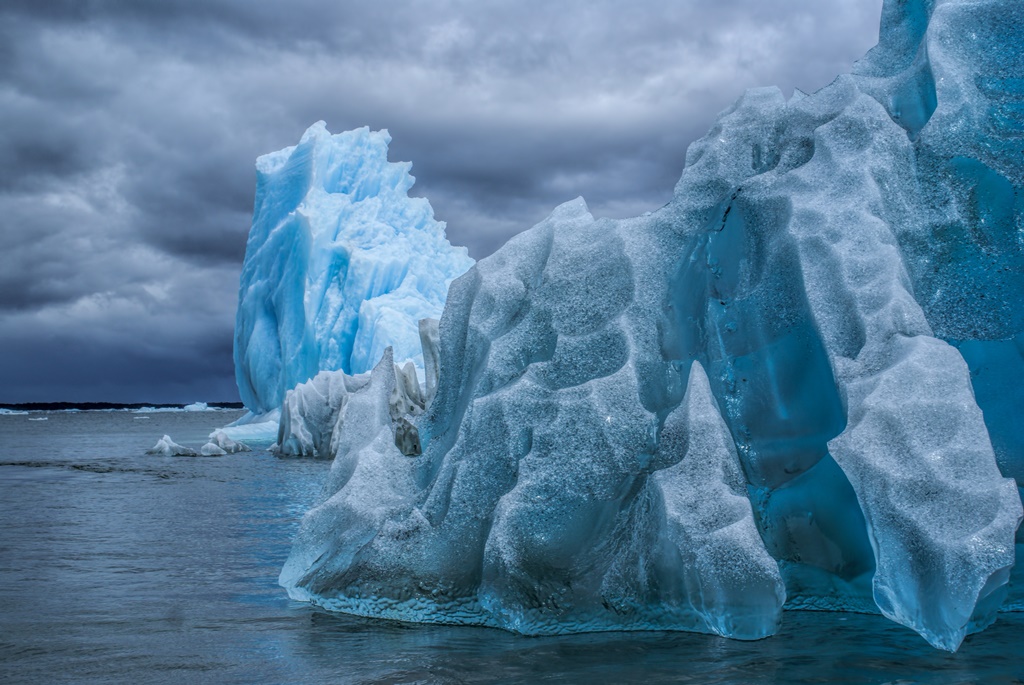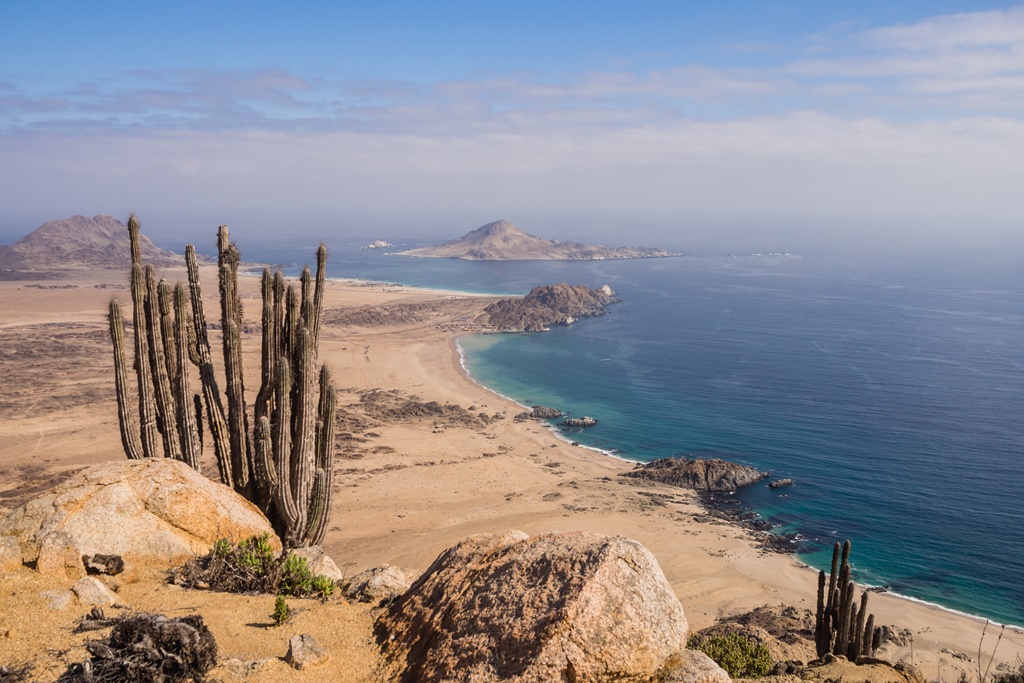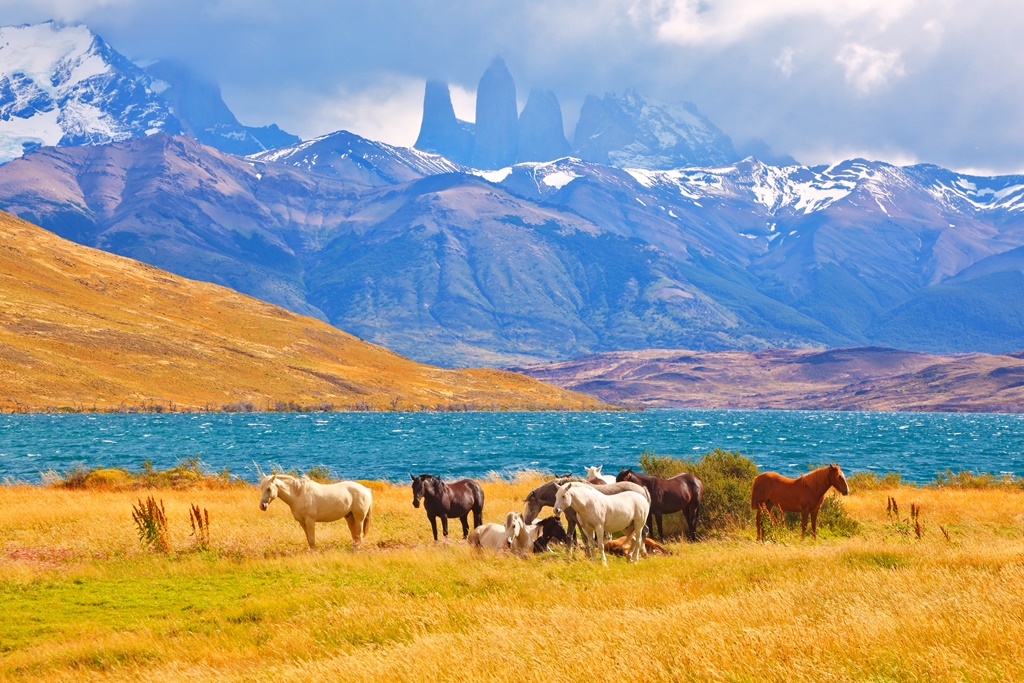National parks in Chile
The 42 national parks in Chile are scattered throughout the country. From the unique Salar del Huasco in the north to the several remote, ice-covered parks of Tierra del Fuego in the south, the national parks greatly vary in landscapes and experiences.
Whether you wish to feel the heat of the Atacama desert or the cold of the continent’s south, or perhaps something in between, you will find something that suits your needs. Also, the diversity also accommodates different types of trips. While some parks are ideal destinations for family trips, others offer adrenaline-inducing remoteness.
Furthermore, 7 of the national parks are part of UNESCO’s Biosphere Reserve list, and one national park was recognized as a World Heritage Site.
Table of Contents
List of national parks in Chile
Without further ado, the following text contains the list of all national parks in Chile, as well as entrance information and a map for easier navigation.
Alberto de Agostini National Park
Alberto de Agostini is a national park in the very south of Chile, in the Magellanes region. Furthermore, it is a location on the way to the Antarctic, and a stunning one at that. The scenery is different each season. From lush green meadows surrounded by snow in spring to the fiery red colours in fall, all the while in contrast with the deep blue of the ocean, Alberto de Agostini constantly treats its visitors with new sights. Also, visitors can often see penguins roaming around the area. However, the park does not have any facilities for tourists, but there are several different excursions offered in the nearby Punta Arenas.
Alerce Andino National Park
This national park is situated in the Andes and is a part of the Bosques Templados Lluviosos los Andes Australes Biosphere Reserve. Its landscape is composed of the larch forest, lakes and waterfalls. As a matter of fact, several trails to the lakes in different areas of the park. Furthermore, the park has three entrances and each entrance has access to different trails. Although there aren’t any services in the park in the matter of food and drink vendors, visitors can enjoy different activities and take in the wonderful sights. Particularly, there are two stunning viewpoints in Correntos and on the trail to Sargano Lake. Also, the trails are ideal for walking, hiking, and trekking. Additionally, the park is a great destination for photography and birdwatching.
Alerce Costero National Park
This park that protects the centuries-old larch forest is not an easy one to explore. The road through the forest park requires suitable trekking or hiking shoes, as there are many occasions where one can slip on the roots of the trees or sprain their ankle. However, the walk is well worth it. Particularly, the Grandfather tree or the Millenial Larch at the end of the main trail is a unique site. This huge tree is about 3,500 years old and is one of the oldest trees in the world. Of course, the larch trees are not the only segment of the park scenery. The river that flows through the park is filled with crystal clear, fresh water and forms beautiful waterfalls. Additionally, it is important to know that there are no tourist facilities in the park – particularly food and drink vendors.
Archipelago de Juan Fernandez National Park
The archipelago is remote heaven in the Pacific Ocean, up to 450 nautic miles off the Chilean coast. The islands are of volcanic origin, with mountaintops proudly stretching above the sea. Many endemic flora and fauna species found their home there, including the endangered Juan Fernandez fur seal. Because of its remote location, the park can only be reached by a navy ship that takes off the coast or by taking one of the flights from Santiago de Chile. Furthermore, the islands of the archipelago have 14 trails and 4 picnic areas that are also campsites. However, visitors who decide to camp are allowed to spend only one night in the park. Also, there are no food and drink vendors in the park, so visitors should bring their own food.
Bernardo O’Higgins National Park
Vast, remote, stunning – those are three words that many would use to describe Bernardo O’Higgins National Park. Located in the Chilean south, Bernardo O’Higgins is a part of the Patagonian Ice Field. Because of its remote location, it is possible to access the park only by the sea. In fact, many different companies offer days-long excursions through the area which is often compared to the scenery of the Norwegian fjords. Interestingly, the area has long been inhabited, and the culture of the Kaweskar and Alcalufe people is significant for the park’s history and identity. Also, at one point visitors can leave the ships to explore the glaciers on foot by following approximately an hour-long trail. Additionally, kayaking activities are also available.
Bosque de Fray Jorge National Park
This national park on the Pacific coast protects the Fray Jorge forest. It is bordered by the Pacific Ocean on the west, the Limari river in the east, and it is surrounded by a desert climate, as it is in the proximity of the Atacama desert. Hence, the park’s subtropical vegetation, and the overall existence of the park, are in stark contrast to its surroundings. Furthermore, Bosque de Fray Jorge is ideal for trekking and camping. Particularly, the main trail is the one through the hydrophilic forest. Also, there aren’t many tourist services in the park itself apart from the picnic area. However, visitors can camp in the areas and towns surrounding the park.
Cabo de Hornos National Park
This national park is unique in many ways. Firstly, it is the southernmost national park in the world, the piece of land stretching right before the Antarctic. Secondly, throughout most of the year, the ocean is haunted by strong winds and high waves. Thus, it is rare for visitors to set foot on the islands. Furthermore, this is an area of great historical and nautical significance. As the park’s name suggests, it is situated close to Cape Horn. And last, but certainly, not the least, there are two landmarks recognized as prominent features of the park: Hornos lighthouse and the City Hall. Visitors can enter the park from Puerto Williams or Punta Arenas, either on private boats or through organized excursions.
Cerro Castillo National Park
This national park in the Patagonian Andes was named after the Cerro Castillo, a snow-capped mountain peak that dominates the park scenery. Along with Cerro Castillo, Cerro Los Cuatro Cumbres also makes a significant portion of the landscape. The mountain slopes are covered by green forest and surrounded by several walking trails, as well as beautiful lakes and lagoons. In fact, Catillo and Juancal lagoons are some of the main attractions in the park. Furthermore, the sapphire blue Laguna Chiguay is not only of beautiful blue colour, but it is also has a camping facility at its shore. Also, the park has five different trails visitors can explore. Apart from camping facilities, the park has no other services.
Chiloe National Park
Chiloé is a national park that preserves both the natural and cultural heritage of its area, as well as interesting paleontological sites. In fact, the park is known for its several endemic animal and floral species. Furthermore, the community of the indigenous people – the Huiliche – reside within the park. The first people of the land keep and protect their culture. However, visitors who wish to can learn more about them. As for services, there aren’t many food vendors or bars. But, there are 7 different hiking trails with viewpoints, a picnic area and a camping area. Another interesting site is Rahue beach, which has paleontological significance.
Conguillio National Park
This national park has several attractions well worth every traveller’s attention, but the most prominent one is undoubtedly the Llama volcano. One of South America’s most active volcanoes nestled in the Ande, and it stands as a remarkable beauty in the already breathtaking area of the park. Furthermore, Conguillio lake is another famous landmark. Along with a chance for relaxation and recreation, the shore of Conguillio lake includes a camping area. Also, the slopes of Sierra Nevada have magnificent hiking trails with fantastic panoramic views of the area. However, there are five other trails that take visitors to different areas of the park and offer different perspectives. In summer, visitors can enjoy the food offered by food vendors, rent a kayak or a boat, or spend the night in one of the cabins available for rental.
Corcovado National Park
The prominent features of this national park are its two dormant stratovolcanoes, volcano Corcovado and volcano Yanteles (also known as volcano Nevado). The two snow-capped volcanic mountains are a sight to behold. However, they are not the only natural beauty of the Corcovado National Park. In addition to the volcanos, there are over 80 lakes in the park. Furthermore, the bay that rivers Corcovado and Tic Toc form is an extremely biodiverse area. Hence, the landscape is a mix of green rainforests, sky blue lakes and mountains covered in snow. Also, it is important to know that there are no tourist services in the park apart from several trails. Thus, the park does not attract many visitors annually, and it is considered one of the most intact places in the world.
Hornopiren National Park
As a part of the UNESCO-protected Bosques Templados Lluviosos los Andes Australes Biosphere Reserve, Hornopiren National Park is a very biodiverse park. In fact, while 50% of its surface is covered by forests, the other 50% is covered by snow, ice, rocky areas, lakes, and lagoons. While camping in this park is prohibited, it is well worth a day’s visit. There are three main trails to choose from: the Rio Blanco trail, and the trail to Pinto Concha lake. Also, the trail to Yates volcano is another popular trail in the park. Services include a picnic area and the tourist information centre.
Huerpuehe National Park
Located at the foot of the Andes and covered by Valdivian temperate rainforest, Huepuehe makes a beautiful destination for hiking. The park has five main trails, and the most popular are the one leading to the lakes and the San Sebastian trail, which is of medium difficulty. Also, one of the trails is also wheelchair accessible. The main attraction in the park is undoubtedly Lake Verde or Lago Verde. Visitors can enjoy several beautiful waterfalls scattered through the park that make fantastic photography locations. Additionally, there are camping and picnic areas with benches and tables. However, there are no restaurants or food vendors in this park.
Guamblin Island National Park
This national park covers the entire surface of Isla Guamblin. It is an uninhabited island that can be accessed by sea or by plane. However, the island is rarely visited, as the surrounding sea is rough and makes docking nearly impossible. As such, it attracts mostly adventurers who are not afraid of its remoteness. Because the island is uninhabited and tourists are scarce, there is no tourist infrastructure in this national park.
Isla Magdalena National Park
The territory of this park contains a major part of Isla Magdalena in Chilean Patagonia. It also includes several smaller islands north of Isla Magdalena. The island’s highest point is the snow-capped Mentolat, a volcano that stands over 1600 meters tall surrounded by green forests of the island. Of course, the sea surrounding the island is crystal clear. And while its temperature is not suitable for swimming, visitors can enjoy its beauties from above the surface. Dolphins are a frequent sight in this area, as well as occasional whales, while penguins roam the island’s shore. However, perhaps the most beloved attraction are the Isla Magdalena hot springs, a perfect way to relax after a long day.
Kawesqar National Park
Although it is a national park, Kawesqar is better known under its former name – The Alacalufes National Reserve. It is in the very south between the Pacific and Concention Channel and includes both sides of the Strait of Magellan. In fact, the park protects many islands and islets of the western archipelagos in Ultima Esperanza and Magellanes provinces. Particularly, many fjords, glaciers, channels and clouds create a mystical, beautiful scenery of the park. However, getting there includes a long trip. Those who decide to go on an adventure and explore this breathtaking national park must book the trip in advance, with starting points from Punta Arenas or Puerto Natales and a journey 7 to 10 hours long.
La Campana National Park
Named after the notable mountain La Campana, or the Bell Mountain, La Campana National Park is one of the visitor-favorites. Notably, La Campana represents a part of the La Campana-Penuelas Biosphere Reserve. Along with the Bell Mountain, the park includes a wetland that is important for many birds and other animal species. The park has three entrances, each on the opposite side, that lead to fantastic hiking routes with breathtaking views. Furthermore, it has a well-organized tourist infrastructure. There are parking lots for visitors, well-marked hiking trails, as well as picnic and camping areas. However, camping is currently not allowed due to the COVID-19 pandemic. Instead, only single-day visits are allowed.
Laguna del Laja National Park
Whether it is snow-coated in winter or sun-bathed in summer, Laguna del Laja guarantees beautiful experiences. Although it bears the name of Laguna del Laja, the lake’s shore barely borders the park. Instead, the national park is centered around the volcanic mountains that are part of the Andes – the dormant volcano Antuco and the extinct Sierra Velluda. However, all three locations are well-worth visiting. Even though just a small portion of its surface is in the park, Laguna del Laja attracts many visitors. Because its shore is barren and grey, many often compare it to what one would expect the Moon’s surface to be like. Furthermore, the two mountains are ideal for climbing and trekking.
Laguna San Rafael National Park
The main attractions of Laguna San Rafael National park are also its most recognizable: San Rafael Lagoon and the San Rafael glacier. In fact, the beautiful lagoon is a product of the stunning glacier’s retreat. However, those two alone don’t make the entirety of the park. In fact, visitors often speak of beautiful mountains of the Andes mountain range that stretch through the park. Furthermore, the glacier itself has many wonders to discover, particularly the ice caves. Yet, the park is quite remote and difficult to access. Because of that, it is a full-day trip that includes several hours of travel to and from the national park.
Las Palmas de Cocalan National Park
The significance of this park lies in its population of Chilean palm. Sensitive and endemic, these trees present an important part of the regional ecosystem. In fact, some of the trees in the park are thousands of years old. However, it is impossible to enter the park for two reasons. First, it is private land. Second, because the palms are too sensitive and allowing visitors to enter could potentially endanger them.
Lauca National Park
Nestled at the high altitudes in the northern Andes lies Lauca National Park. Its two main attractions are the beautiful Chungara and Colacotani lakes, above which rise the volcanoes of Payachata. However, there are many other things worth seeing and exploring. The park has many rivers, including the headwaters of the Lauca River. It is also abundant with wildlife, including llamas and Chilean flamingo to name a few. Furthermore, the snow-capped volcanoes make excellent hiking destinations. The park has a picnic area with picnic tables, parking lots for visitors and several trails, including the lake trail.
Llanos de Challe National Park
This desert national park in the Atacama region protects over two hundred floral species, 14 of which are endemic to the region. Additionally, it is also a habitat of the largest Chilean land animal called guanaco. Furthermore, the vast spaces of barren land with life scattered around is in grave, beautiful contrast with the Pacific coast. Particularly, the most beloved attraction in this part of the park is Playa Blanca. The beach is covered with white sand, with turquoise waves of the Pacific Ocean brushing against it. The park has two main tourist trails, restrooms and a picnic area. Furthermore, the park also has a camping area, but with a restricted number of visitors.
Llullaillaco National Park
The national park centred around the Llullaillaco volcano owes its landscape to the Andes and the Domeyko mountain range. It is a semi-desert park with a lot to discover; while the volcano is perhaps the most prominent feature of the park, there are also several streams and ravines. Furthermore, the top of the volcano treasures an archaeological site: the former Inca sanctuary where preserved mummies were discovered. Speaking of the Inca, the sanctuary is not the only thing they left behind. The UNESCO-protected Andean Road System that this nation built passes through the park. Activities in the park include hiking, birdwatching and mountain biking.
Melimoyu National Park
On the coast of the Chilean Patagonia and stretching on several nearby islands lies Melimoya National Park. It is one of the youngest national parks in Chile, as it was established in 2018 with an aim to preserve the Melimoyu volcano. Furthermore, the rainforest vegetation dominates the flora of the park, and clear rivers make their way through the forest towards the Pacific Ocean. Because some of the park territories include islands, visitors can access those areas only by sea. The park does not have any type of tourist facilities. However, photography and nature enthusiasts will surely enjoy the beautiful nature of Melimoyu National Park.
Morro Moreno National Park
An undiscovered, and somewhat not completely utilized, national park encompasses the coastal and maritime beauties and ecosystems. It is located on the Mejillones Peninsula, not too far from Antofagasta. Because the park does not cater much to tourists, there are no services or tourist infrastructure on this part of the peninsula. Instead, it is a destination ideal for trekking and enjoying the views of the sea splashing against the shore. Also, although there are no picnic tables, it is a good destination for that activity – visitors should only bring their own picnic blankets.
Nahuelbuta National Park
This national park stands at the tallest part of the Nahuelbuta mountain range, and it is a remarkable destination. Interestingly, there are 15 trails through the park, with five main trails that lead to different areas of it. Undoubtedly the most frequented trail is the one leading to Piedra del Aguila, or the Eagle Stone. The mountaintop serves as a viewpoint where visitors can soak in the beauty of the surrounding nature: the deep blue of the Pacific on one side and the stunning volcanic Andes on the other. Furthermore, the park has a camping area for visitors who wish to spend the night surrounded by nature and take their time to explore the area.
Nevado Tres Cruces National Park
This national park is located in the cold desert of the Andean steppe at high altitudes. Thus, it is a park that guarantees adventure and sights that are unique to this area of Chile. The park is divided into two sectors: Santa Rosa lagoon in the north and Negro Francisco in the south. Nevado Tres Cruces owes its name to the inactive volcano located in the park. Because of the possible, but unlikely, volcanic activity in the area, as well as the park’s high altitudes and cold climate, visitors should take good care of themselves during their visit. However, that does not mean they can’t enjoy trekking or photography. Also, the park has camping areas and refuges for visitors who wish to spend an extra night in the park.
Pali Aike National Park
Less than 200 kilometers northeast of Punta Arenas, near the border with Argentina, lies Pali Aike National Park. It is centered around the part of Pali Aike volcanic field, thousands of years old and desolate area of natural and historical importance. Particularly, Pali Aike is an important archaeological site as many pre-Columbian remains were found in the park’s famous Pali Aike cave. It is also a composition of unique landscapes made up of lava fields and craters of the extinct volcano. Furthermore, visitors can explore the park by following four main trails that each leads to an important landmark. Those trails lead to Pali Aike Cave, Laguna Ana, La Morada del Diablo and Pezos del Diablo.
Pan de Azucar National Park
This national park offers the experience of both desert and spectacular beaches on the Pacific coast. Pan de Azucar Island, Las Chatas islets and Los Mariposas rocks form the maritime part of the park, with lots of spectacular wildlife to see. For instance, the Magellan penguins that inhabit Pan de Azucar are a popular attraction. Many visitors book boat excursions to have a view of the island and perhaps of penguins. However, they are not allowed to leave the boats and explore the land. Along with boat excursions, camping is another popular activity. Namely, camping at one of the soft sandy beaches that overlook the sea. Trekking in the desert area is also possible.
Puyehue National Park
As a part of Bosques Templados Lluviosos Biosphere Reserve, Puyehue National Park receives is abundant with humid forests and receives many visitors. It lies in the Andes and centers around the Puyehue volcano. With 16 walking trails of length ranging from less than half a kilometer to 28 kilometers, it has a lot to explore and discover. Unsurprisingly, the park has many stunning waterfalls running with crystal clear water. However, the most popular attractions are undoubtedly the hot springs. Interestingly, the park is divided into three areas: Aguas Calientes, Anticura and Antillanca, where visitors can enjoy various activities from hiking to relaxing in thermal waters. It is also possible to spend multiple days in this park as there are several accommodation options.
Queulat National Park
In the Andes of Chilean Patagonia lies the Queulat National Park. It shares its name with its most notable, stunning landmark: Queulat Hanging Glacier. In addition to the breathtaking surrounding nature and the astonishing view of the glacier itself, a breathtaking waterfall emerges from it and adds to its beauty. Visitors can observe the glacier from the nearby Laguna Tempanos or rent a boat that will take them across the lake. However, there is a lot more to this park than just a glacier. Piedra del Gato and Condor Falls are also notable landmarks worth the visit. Some of the activities are hiking, animal watching, photography and recreational fishing.
Radal Siete Tazas National Park
The river Claro forms a wonder of nature called Siete Tazas, or The Seven Cups. Namely, those are seven consequential pools filled with turquoise water, surrounded by beautiful forest. Hence, the pools are the park’s main attraction. One of the eight trails in the park is referred to as Universal Trail which people with decreased mobility can use to reach and see Siete Tazas. Furthermore, other trails in the park are hiking trails of low to high difficulty. The shortest trail is under a kilometer long, while the longest guarantees 15 kilometers of hiking. There are also other ways to explore the park. For example, horseback riding or camping. The park also has food vendors and picnic areas.
Rapa Nui National Park
Perhaps one of the most recognizable landmarks in Chile is Rapa Nui National Park. This World Heritage Site is unlike any other national park in the country. Interestingly, the national park was named after the Rapa Nui, the first people who inhabited the land that is nowadays more known as Easter Island. In fact, it was the Rapa Nui who made the famous sculptures called moai that the island is known for. Rapa Nui national park is co-managed with the Ma’u Henua indigenous community. Along with the desire to see the fascinating statues, visitors also come to enjoy the stunning landscape. Undoubtedly the most famous natural beauty in the park is the beautiful Anakena beach. While the easiest way to visit Easter Island is to fly from Santiago, there are many agencies offering excursions and cruises to the island.
Rio Clarillo National Park
Only 45 kilometers from Santiago lies Rio Clarillo National Park. It shares its name with the River Clarillo that flows through the park. However, the main aim of the park is not only to preserve the purity of this river but also to protect the surrounding mountain nature of the Cordillera. Specifically, to preserve the Cordillerian flora. The six main hiking trails lead visitors along the river flow, through the mountains and the evergreen forest where various animals reside. In fact, there are six main hiking trails of low difficulty. Furthermore, the park has picnic areas where only pre-prepared food is allowed. As a precautionary measure, grills and any sources of heat are prohibited in the park.
Salar del Huasco National Park
At high altitudes near the Bolivian border is Salar del Huasco National Park, the youngest national park in Chile. The intact landscape of salt flat, wetlands and the Andean slopes is also a home and nesting area for several bird species. Namely, those include flamingos and Andean gulls as some of the most famous. Because it was established in the midst of the global pandemic, the park hasn’t yet developed to its full potential. In particular, there aren’t any tourist services, and the park hasn’t yet attracted many visitors. However, the beautiful pale landscape and fascinating wildlife make this park one of the undiscovered gems of Chile.
Tolhuaca National Park
This national park aims to preserve many natural gems that lie within its territory. Although it gained its full size relatively recently, Tolhuaca used to be a part of the neighbouring Malleco National Reserve. Furthermore, the park’s most notable feature is the Tolhuaca volcano that rises above the forest and dominates the scenery although the volcano itself is not within the park’s territory. Also, the main attractions are two breathtaking landmarks: Laguna Verde, or the Green Lagoon, and Salto Malleco with its tall Malleco waterfall. Hiking trails of moderate difficulty lead to both locations. However, two other trails lead to different, equally mesmerizing areas of the park. While camping is allowed, the park doesn’t have any food services.
Torres del Paine National Park
One of the most breathtaking national parks in the world is Torres del Paine. Cordillera del Paine represents the heart of the park filled with turquoise lagoons and lakes, enchanting glaciers, which all form unforgettable scenery. Although the main attraction is undoubtedly the three Towers of Paine, Laguna Amarga is another notable attraction. Furthermore, the park has three entrances: Lake Sarmiento, Laguna Amarga and Serrano River. From there, visitors can hike throughout the park and sleepover at one of the campsites or mountain huts. However, the hike may prove challenging for some visitors so it’s important to have proper gear when visiting. Of course, there are many activities to enjoy in the park. By far the most popular are lake excursions to the glaciers and horseback riding.
Vicente Perez Rosales National Park
The oldest national park in Chile is a part of Bosques Templados Lluviosos los Andes Australes Biosphere Reserve. It aims to protect the natural environment and waters of Todos Los Santos Lake, which serves as a headwater of the Petrohue River. Furthermore, the scenery of this Andean park is absolutely remarkable. One of the main attractions and most well-known features are the Petrohue waterfalls. In addition to the waterfalls being beautiful themselves, the scenery is also composed of the snow-capped volcano Osorno that rises behind them. The park has sixteen walking trails that vary in length, difficulty and duration. As for activities, camping is not allowed. But, the park has picnic areas and it is also fantastic for photography enthusiasts.
Villarrica National Park
This Andean national park centers around three volcanic mountains: Villarrica, Lanin and Quetrupillan. While Villarrica is one of the most active volcanoes in Chile and climbing it poses a particular amount of risk, it also has a small, fascinating lava lake nestled in its cone. However, the neighboring volcanoes – Quetrupillan and Lanin – are of different nature. Quetrupillan is a dormant volcano, and Lanin – a volcano shared by Chile and Argentina – is believed to be extinct. Furthermore, the park has 7 main trails, and there are several waterfalls in the surrounding forest. Moreover, one of the main landmarks are Lagos Andinos or the Andean Lakes. Also, Villarrica is a popular ski destination in winter, as well as a camping destination.
Volcan Isluga National Park
The remote national park in the Andes bears the name of the volcano that is the centerpiece of the park. Volcano Isluga is an active volcano that last erupted over a hundred years ago but has a record of several volcanic earthquakes in the past several years. The mountain slopes and hills of the park are desolate, completely detached from the urban world. However, there is a lot to see and discover. Particularly, the territory of the park lies between the sacred lands of the Aymara people. Town Isluga stands out as a town of cultural and religious importance. Furthermore, visitors can explore the park by two trekking trails: Sendero Laguna de Aravilla trail or Isluga volcano trail. However, the tourist infrastructure in the park is low, and there are no campsites.
Yendegaia National Park
As one of the southernmost, coldest, most remote national parks in Chile, Yendegaia National Park is an undiscovered gem. It is nestled in Tierra del Fuego, where glaciers, mountains and evergreen forests decorate the landscape surrounded by the deep sea. Precisely, the park takes up a major territory of Isla Grande de Tierra del Fuego. Furthermore, the island is surrounded by many channels and fjords that the glaciers carved thousands of years ago. Because of its remoteness, it is not easy to access the national park. Eager visitors can take an excursion from the nearby Puerto Williams. However, there are no tourist services or infrastructure on the island – just its natural beauty.
Pumalin National Park
Pumalin National Park is a part of UNESCO-declared Bosques Templados Lluviosos los Andes Australes Biosphere Reserve. The park has two entrances – one in the north and one in the south – and each entrance leads to hiking trails of varying difficulties and lengths. Once visitors enter the park, they can explore the vast territory and diversity of its landscapes. For example, hike the impressive Chatuen volcano or take the trails to breathtaking Lago Blanco and Lago Negro. Furthermore, there are many waterfalls and cascades in the park. However, one particular stands out – the tall, mesmerizing Escondida Waterfall. Additionally, visitors can camp at one of the several campsites in the park. Spending the night at such a marvelous, large park is never a bad idea.
Chile National Parks by size
The national parks in Chile take up over 13.2 million hectares of the country’s territory. The parks vary in size, but some of them encompass large pieces of land. In fact, the largest of the parks is Bernardo O’Higgins National Park. The following list contains the 10 largest national parks in Chile.
- Bernardo O’Higgins National Park
- Kawesqar National Park
- Laguna San Rafael National Park
- Alberto de Agostini National Park
- Pumalin National Park
- Corcovado National Park
- Llullaillaco National Park
- Vicente Perez Rosales National Park
- Isla Magdalena National Park
- Queulat National Park
Entrance to national parks in Chile
Some of the national parks in Chile are free to enter, while others require an entrance fee. Entrance fees are divided into two categories: for national residents and for international visitors.
Furthermore, children under the age of 11 are free to enter in most of the parks. Entrance fees for adults differ from park to park, so it is impossible to determine a single price. Furthermore, the prices range from 7300 pesos for foreigners and 3700 pesos for national residents to 4200 pesos for foreigners or 2100 pesos for national residents. Also, most national parks accept payment only in national currency and in cash.
Map of national parks in Chile
National parks in Chile FAQs
There are 42 national parks in Chile.
The largest national park in Chile is Bernardo O’Higgins National Park.
The oldest national park in Chile is Vicente Perez Rosales National Park.
The newest national park in Chile is Salar del Huasco National Park.
The most visited national park in Chile is Torres del Paine National Park.



